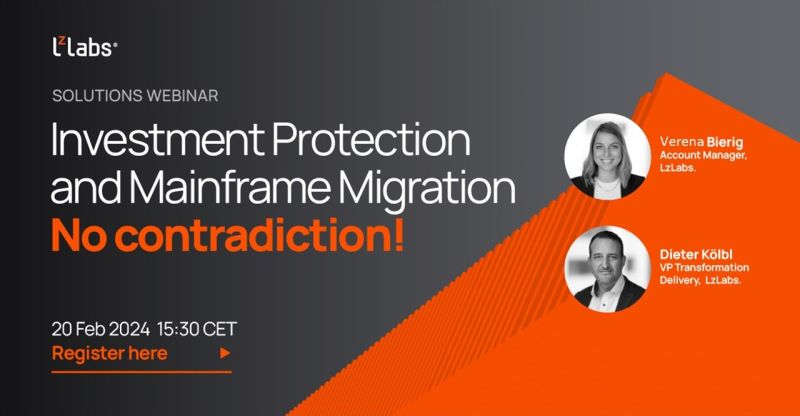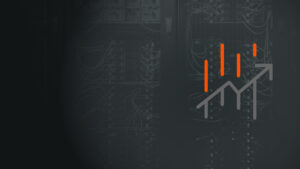Why waste significant investments in existing applications?
Captured in proprietary applications, a company’s existing business logic amounts to precious capital. Such applications bring in-depth industry knowledge, market expertise and business acumen to bear, helping keep a company’s competitive edge sharp. And, of course, proprietary applications incorporate trade secrets that drive a company’s distinct and unique brand value in the marketplace.
Any radical approach to migrating proprietary applications – such as replacing by off-the-shelf standard software or developing new applications from scratch – means that major investments in applications are lost. In addition to the sheer waste of millions invested in applications, companies opting for a full rewrite or replacement will likely have to assign scarce resources to recreate their applications’ connections and interfaces on a new platform – not to forget the data format conversion effort.
Focus on only changing what needs to be changed
For good reason, many organisations are looking for an approach that enables them to continue making the most of their home-grown applications even after transitioning to a new platform. Ideally, they want to find a “bridge technology” that overcomes the chasm between the legacy mainframe habitat and their future system environment.
The good news is that this “bridge technology” is readily available. Providing a unique combination of binary compatibility and interoperability, the LzLabs Software Defined Mainframe® (SDM) supports organisations in protecting and preserving their mainframe application investment as they move forward. It allows applications to move – as they are – from the mainframe via the SDM to a more modern platform – such as a public or private cloud or an x86-based on-premise system environment. This move does not require any rewriting or recompilation of existing code. Even the end-user experience will remain the same on the SDM.
Step-by-step application migration
Via the SDM, the entire application relocates from the mainframe to the cloud. Applications can be migrated selectively, one at a time, per business requirements and priorities. This iterative approach eliminates the risks associated with a “big bang” rewrite or replace approach and helps deliver the quick wins needed to secure ongoing C-level buy-in and support. Preserving application logic, user experience, and data formats, the SDM reduces migration risks and substantially decreases testing effort.
Integration platform retains connections
What happens to the legacy applications that remain on the mainframe? How will these interact with migrated applications on the SDM? The SDM retains existing connections between applications when these are migrated. Interoperability on the SDM helps ensure that applications moved to the new system platform continue to seamlessly communicate with their connected application siblings on the mainframe as before the migration. This means that the SDM enables organisations to selectively offload business-critical processes and the underlying applications to today’s highly scalable cloud platforms, thus freeing up system resources on the mainframe for the workloads that remain there for the time being.
Migrated workloads on the SDM maintain full interoperability with the mainframe. Integrated via a shared central database, data is kept in synch for both system worlds. This data synchronisation is paramount to operability across both platforms, including scheduling, monitoring, and backup and recovery.
Matching mainframe batch performance
The mainframe is known for its phenomenal file processing and batch performance. The Mainframe uses a scripting language that supports batch jobs, which can be transferred to the SDM without any code change. Thanks to scale-out and massive parallel processing in the cloud, the SDM can deliver batch processing performance that matches or even exceeds that of the mainframe.
Two recent customer cases illustrate how the SDM can be harnessed for investment protection.
Paving the modernisation way forward
At LzLabs, we are committed to making the journey to modern technology smooth for our clients. By safeguarding the time and effort already invested in mainframe systems, we provide a clear and accessible path to updating these systems with less risk. Our methodology allows companies to easily move their mainframe tasks to more flexible and modern platforms, including cloud services. We also make it easier for businesses to shift to newer programming languages like Java, comfortably interfacing with the Cobol or PL/1 applications running on the SDM. Our goal is straightforward: help our clients stay ahead with technology that is not only advanced but also practical and easy to integrate. With LzLabs, companies can modernise without losing their valuable past investments, ready to face the future with confidence.
Automotive Manufacturer Adopts Public Cloud for Digital Manufacturing Processes
An automobile manufacturer with a global presence is advancing its manufacturing processes for the digital age, planning to phase out its mainframe in favour of a public cloud. Partnering with LzLabs, T-Systems migrated the business-critical Bill-of-Materials (BOM) application, whose scalability on the mainframe is limited, to the cloud – enhancing performance and meeting the manufacturer’s strict security standards. This successful cloud transition lays the groundwork for further migrations.
Insurance: Transition from Mainframes to Standardised Software Packages
A major German insurance company is shifting away from legacy mainframe technology to cut costs and increase business agility. As an interim solution, the company’s business logic and data were moved to SDM technology, starting with a health insurance application that now operates more efficiently. The gradual move to SDM paves the way for future adoption of standard software solutions, boosting cost efficiency and enabling the IT team to adopt modern practices such as using Linux, open-source products, and agile methodologies.
For a more detailed insight into the customer case studies, watch our webinar: Investment Protection and Mainframe Migration: No Contradiction.
Mainframe migration and investment protection – not mutually exclusive
Organisations can, and should, pursue to leverage their valuable intellectual property embedded in proprietary applications. The SDM emerges as a bridge technology, offering binary compatibility and interoperability, enabling a seamless transition to modern platforms without losing existing business logic or needing code rewriting. The step-by-step migration facilitated by the SDM ensures that each application’s unique value is preserved while capitalising on cloud environments’ scalability and performance benefits. With successful case studies in industries from automotive to telecommunications, from banking to insurance, LzLabs has demonstrated that a thoughtful, phased approach not only protects but enhances investments, ensuring that organisations’ competitive edge remains as sharp as ever in the digital era.






